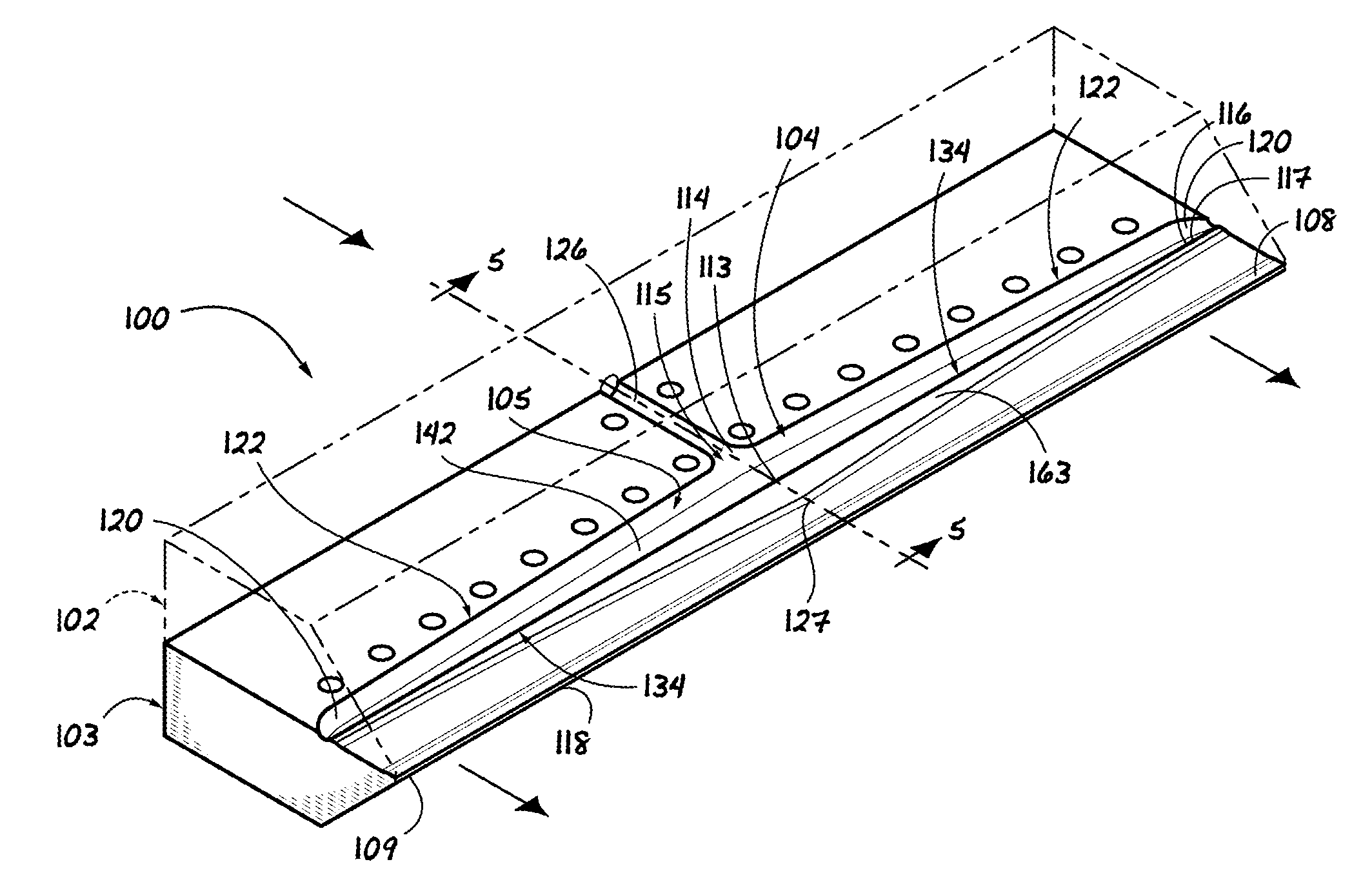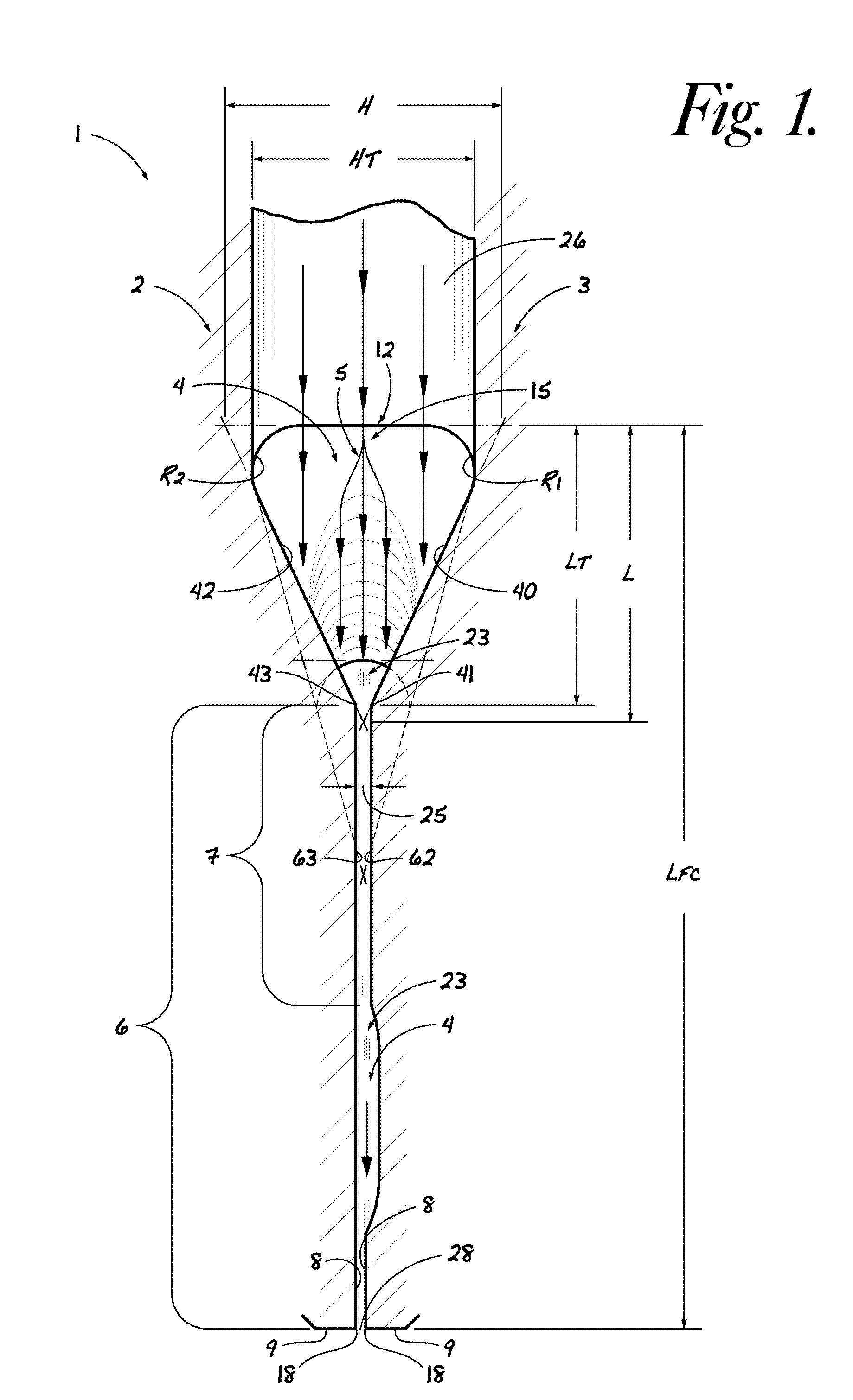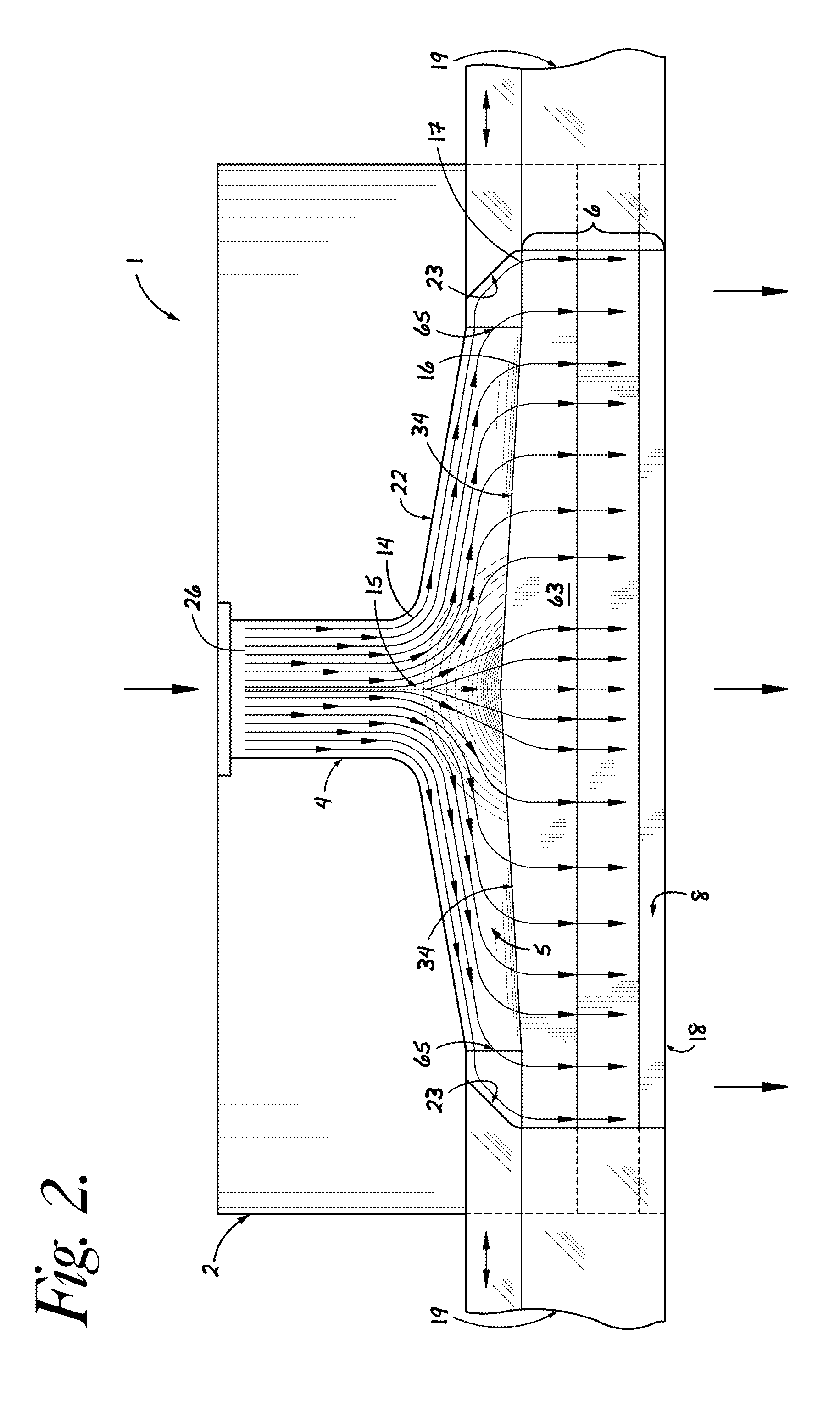Varying transition zone manifold
a transition zone and manifold technology, applied in the field of slot die nozzles, can solve the problems of increasing the mass flow exchange rate at the expense of an increase in the manifold pressure drop, reducing the residence time across the manifold width, and reducing the efficiency of the manifold. the effect of reducing the stagnation
- Summary
- Abstract
- Description
- Claims
- Application Information
AI Technical Summary
Benefits of technology
Problems solved by technology
Method used
Image
Examples
first embodiment
[0064]With reference to FIGS. 3 to 5, and to the invention, a description of an extrusion die 100 including a flow channel 104, is provided with reference to the description of die 1 as indicated by the use of corresponding numbers and alphabetical letters to designate like parts or features. For sake of brevity, therefore, details of die 100 that may be understood from the description of die 1, are generally not repeated. Unlike flow channel 4 of die 1, flow channel 104 of die 100 lacks a gull-wing portion convenient for receiving an internal deckle; however, die 100 may be modified in like manner, as may be understood from the description of the 6th embodiment of this invention.
[0065]Arrows located at the entrance to and exit from die 100, indicate the main direction of mass flow through the die beginning at an inlet 126 and ending at an exit orifice 128 of flow channel 104. Flow channel 104 further comprises a generally teardrop-shaped manifold 105, and a downstream flow channel ...
second embodiment
[0089]With reference to FIGS. 6 to 8, and to the invention, an abbreviated description of an extrusion die 200 including a flow channel 204, is provided with reference to the description of die 100 as indicated by the use of corresponding numbers and alphabetical letters to designate like parts or features. For sake of brevity, therefore, details of die 200 that may be understood from the description of die 100, are generally not repeated. Like flow channel 104 of die 100, flow channel 204 of die 200, as illustrated, lacks a gull-wing portion convenient for receiving an internal deckle; however, die 200 may be modified as may be understood from the description of the 6th embodiment of this invention.
[0090]Flow channel 204 includes a manifold 205, which extends transversely from the midline of the manifold width, and as indicated in FIG. 7, the manifold width may substantially correspond to width W of flow channel 204. Downstream flow channel portion 206 of flow channel 204 convenien...
third embodiment
[0109]With reference to FIGS. 9-11, and to the invention, an abbreviated description of an extrusion die 300 including a flow channel 304, is provided with reference to the description of die 100 as indicated by the use of corresponding numbers and alphabetical letters to designate like parts or features. For sake of brevity, therefore, details of die 300 that may be understood from the description of die 100, are generally not repeated. Like flow channel 104 of die 100, flow channel 304 of die 300, as illustrated, lacks a gull-wing portion convenient for receiving an internal deckle; however, die 300 may be modified as may be understood from the description of the 6th embodiment of this invention.
[0110]Flow channel 304 includes a manifold 305, which extends transversely from the midline of the manifold width, and as illustrated in FIG. 9, the manifold width may substantially correspond to width W of flow channel 304. Downstream flow channel portion 306 of flow channel 304 convenien...
PUM
| Property | Measurement | Unit |
|---|---|---|
| Length | aaaaa | aaaaa |
| Angle | aaaaa | aaaaa |
| Flow rate | aaaaa | aaaaa |
Abstract
Description
Claims
Application Information
 Login to View More
Login to View More - R&D
- Intellectual Property
- Life Sciences
- Materials
- Tech Scout
- Unparalleled Data Quality
- Higher Quality Content
- 60% Fewer Hallucinations
Browse by: Latest US Patents, China's latest patents, Technical Efficacy Thesaurus, Application Domain, Technology Topic, Popular Technical Reports.
© 2025 PatSnap. All rights reserved.Legal|Privacy policy|Modern Slavery Act Transparency Statement|Sitemap|About US| Contact US: help@patsnap.com



